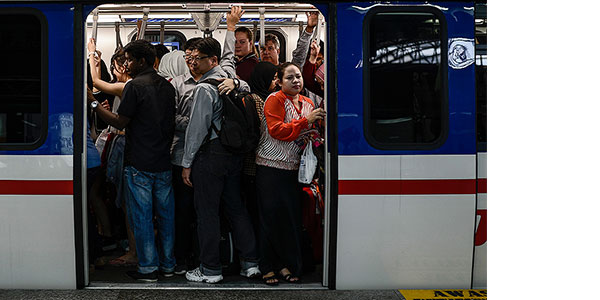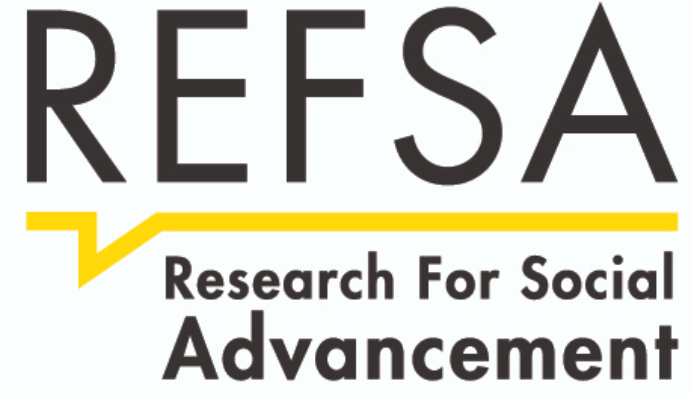PRESS
ROOM

SEP 20, 2017
Public transport is more than ‘big toy’ infrastructure
MP SPEAKS | Many of us talk about a “liveable city,” “creative city” or “sustainable city.” But we should emphasise the political aspect of cities with the idea of a “social city.”
A city is only considered “social” when it is inclusive both socially and economically. With the right set of policies, the city can provide many with opportunities for upward mobility, and be a great level-playing field for all to thrive, which rural and agricultural areas may not be able to do.
However, cities can also exaggerate the gap between the haves and have-nots, especially when societies are organised to benefit the few at the expense of the rest. The “social city” agenda is set in such a context to discuss how cities bring forth the good life many aspire towards in a sustainable and inclusive manner.
Seventy-five percent of Malaysians and more than 50 percent of the world’s population live in urban areas. Ways in which cities are governed have become very important political questions globally.
Urban governance, or the lack of it, often decides the fate of governments. Even one-party state China has to be very concerned about the quality of air in Beijing and other major cities, as it affects the popularity of the government. And, often, popular mayors are elected to the highest echelons of national office, like President Joko Widodo (Jokowi) of Indonesia.
For cities to function, transport is the key underpinning factor. Malaysia is a case of not getting transport right, and hence the nation suffers collectively, both economically and in terms of quality of life.
Cars and motorcycles
Malaysia has 11 million registered private cars and another 11 million motorcycles. A Nielsen survey in 2014 showed that Malaysia has the third highest per capita car ownership in the world, with 93 percent of households owning at least one car, and 54 percent owning more than one.
Enrique Peñalosa, former mayor of Bogotá, Colombia said: “A developed country is not a place where the poor have cars. It’s where the rich use public transportation.”
We have turned that around, and now have a situation where “most of the poor have cars, and if they are poorer they are on motorcycles.”
In Malaysia, even with such a huge ownership of private cars and motorcycles, the transport needs of women, students, elderly, children, disabled and the very poor are not catered for adequately. We are among the nations with the highest road deaths per capita. Each year, about 7,000 die in road accidents, and many more are injured severely too. Two-thirds of fatalities are motorcyclists.
The government takes the approach that road accidents can be reduced purely by teaching people how to behave properly while driving, but the truth is that motorcycles are more susceptible to accidents and injuries than those behind the wheel.
A constituent of mine, Hisham, was left paralysed in a motorcycle accident in 2000, when his son was only one year old. On the eve of Hari Raya 2016, I was devastated upon hearing that his 17-year old son was injured in a motorcycle accident. When situations like this become multi-generational, it is heartbreaking.
Social and economic costs
We hardly talk about the economic and social costs of caring for those who are permanently injured. Yet, if everyone who rides a motorcycle today owns a car tomorrow, the number of cars on the roads will double. With the cities choked to no end, the nation’s consumption of oil will double as well. We can choose to build more roads to cater for more cars, but that doesn’t solve the problem.
Of course, the economic cost of car ownership is very high as well. Often, young families in the city spend a third of their income on instalments for car loans, petrol and maintenance, thus depressing disposable income which can be spent in other parts of the domestic economy.
While Malaysia benefits from being an oil exporter, we have been a net oil importer since 2014, in part because of the heavy dependence on private vehicles.
How does this impact petrol prices? Research has shown that there is a clear correlation between higher petrol prices and road deaths in Malaysia. The government has blood on its hands when petrol prices are increased. But can petrol prices be permanently subsidised at the expense of other expenditures and at the risk of bankrupting the treasury? Perhaps not.
Therefore, as a society, we need to make hard political choices over resource allocation. To cater for the transport needs of a growing population without everyone having to resort to private cars and motorcycles with the attendant economic and social costs, public transport is the only way out.
Trains
But a workable public transportation system does not seem to be on Prime Minister Najib Abdul Razak’s mind. While his associates may call him the “father of public transport,” he is merely building ‘big toy’ infrastructure, not a connected system.
Only those in the construction sector are really excited about big-ticket projects, such as the MRT and LRT extensions, as they benefit from the contracts and jobs directly.
To begin with, the various big infrastructure projects do not “talk” to each other. MRT and KTM run their own different systems, not as one single system.
There is no transformative impact on the lives of ordinary folks in Kuala Lumpur, as these are just concrete and trains, but not a system. It is just for Kuala Lumpur, and the cost is already sky high.
A study by my parliamentary colleague Ong Kian Ming reveals that Prasarana has a debt of more than RM20 billion. The MRT alone cost RM21 billion to build, land costs not included. Malaysians outside Kuala Lumpur do not get anything out of these infrastructure projects.
Buses
A well-connected system connects a person from his home to his destination through all modes of public transport, whichever is suitable. Buses are the cheapest option. I always joke that even with corruption and the depressed ringgit, a European-made bus probably costs under RM700,000.
Buses and some forms of Bus Rapid Transit (BRT) have to be part of the solution. Kuala Lumpur had 1,500 buses in 1985 when Klang Valley was only one-third of its current size. There are less than 1,000 buses in the wider Klang Valley area now.
Ultimately, a well-connected system has to solve the “last mile” question first before buying ‘big toy’ infrastructure.
In Malaysia, until the free CAT buses were first introduced by the Penang government in 2008, “user-pay” was the prevailing idea. Governments at all levels think that road construction and maintenance is their responsibility, but not public transport.
I was with Penang Chief Minister Lim Guan Eng in Seoul, Korea, on June 4, 2008, when then prime minister Abdullah Ahmad Badawi increased the petrol price by 40 percent. We came up with the idea of providing free buses as a response.
Years later, Kuala Lumpur City Hall (DBKL), the Selangor and Johor state governments, and the Petaling Jaya Municipal Council (MBPJ) now provide free bus services.
The purpose of public transport
The idea of providing free buses is not about free buses per se, but about getting the government to pay for public transport. Public transport is a public good.
If we want to cater for the transport needs of the entire nation and not just Kuala Lumpur, a more affordable transport mode than ‘big toy’ infrastructure will have to be adopted. Traffic congestion doesn’t just happen in Kuala Lumpur, it happens in many secondary cities too.
Another reason to think of a more affordable transport mode is this: just like roads, which are only congested during peak hours, public transport is only packed during peak hours. Therefore, building ‘big toy’ infrastructure may mean the facilities are idle most of the time.
And – I cannot resist saying this – the purpose of public transport all over the world is to get people to work and back home on working days during peak hours. It is not about bringing people to shopping malls.
There is a misguided belief that ‘big toy’ public transport infrastructure can be funded through a “Hong Kong model” of “transit-oriented development,” through selling lands around a transit station for property development, such as shopping malls and condominiums. But KL Sentral and many other “Sentrals” around the country testify that such property plays do not improve the quality nor increase usage of public transport.
Transforming public transport in Malaysia is my passion, in part because my father was once a taxi and minibus driver. From the time I was taking public buses to school 25 years ago, I thought we could improve our public transport.
For the nation, the debate about transport will only increase in importance as we grapple with issues like the increased transport needs of a growing population, energy efficiency, reducing road deaths and accidents, as well as other economic and liveability choices.
We need a new paradigm for public transport for all.
